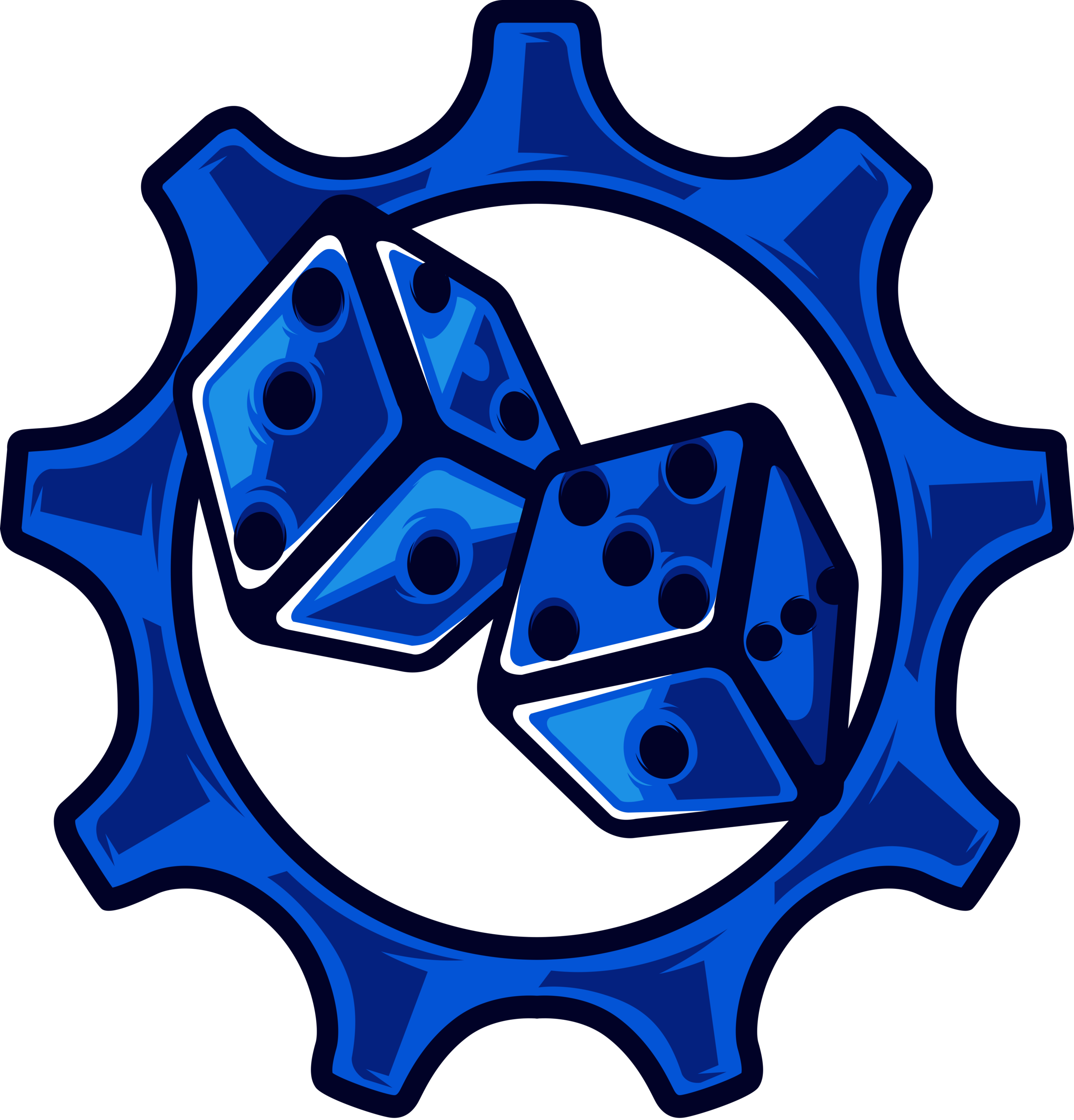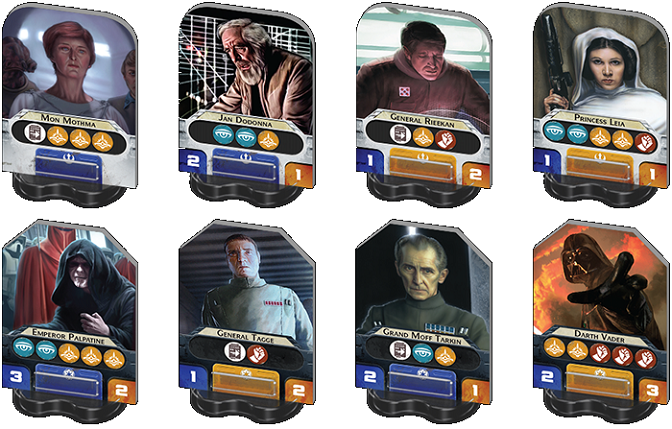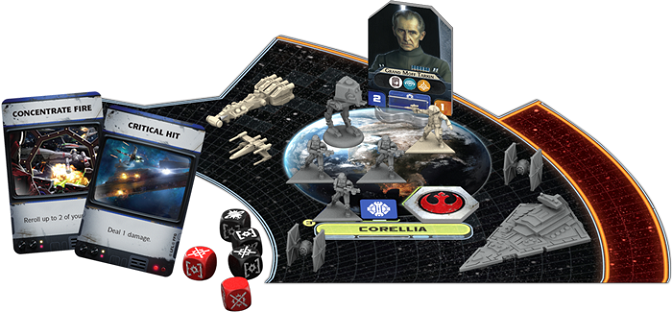Gamer Review: Star Wars Rebellion
Authored by Brook Hubbard
Star Wars: Rebellion, from Fantasy Flight Games, is a complex strategy game that mirrors the battle between the Rebel Alliance and the Galactic Empire. One player plays each side (I’ll talk about more players later), each with their own goals.
The Empire needs to stamp the rebels out of the galaxy, which is done by finding their hidden base and wiping them out. All of them. The Rebels win by earning galactic support through their cause; this is done over time but hurried along by succeeding at objectives that build their reputation.
For such a complex game, each turn is relatively simple. Assign some (or all) of your leaders to missions, take turns resolving assignments or moving your military (with the possibility of battles), and then end by gaining new goals, units, and leaders.
That simple turn order is an illusion; there is so much you can do, but you have so few resources to do it.
For example, assigning all your leaders to missions will leave you none to counter your opponents’ assignments or help should a battle break out. Leaders are also necessary to move your military from one star system to another; if there’s no one to take command, your units just mill around.
Players must strike a balance on how many leaders they risk on missions, how many they use to command their military, and how many they keep in reserve. Not to mention, each leader excels at specific areas, so knowing who’ll do the best on a mission (or countering that type) is essential.
Combat between units is straightforward, almost like an oversimplified version of X-Wing, Imperial Assault, or even the Star Wars RPG. Two different colored dice have symbols that represent varying levels of success or tactical advantage.
Units use different dice to show what they can hurt; an X-Wing is usually good against fighters only, whereas a Corellian Corvette can damage both fighters and capital ships. Of course, even a starfighter can get a critical hit on a Star Destroyer with the right roll or Tactic Card.
Even small battles often result in dead units, but you can build more every couple of rounds. The Rebels usually have missions that allow them to create units, even if they’re insurgents trying to free their subjugated planet. The Empire is more dangerous, as their projects can grant them Super Star Destroyers or even bring the dreaded Death Star’s laser online.
Rebellion’s upside is its replayability and fun take on a story almost everyone has heard.
While there are only two ways for either side to win really (find the rebel base or keep the Empire at bay as long as possible), there are multiple routes to either, and they change each game.
Does the Empire start with a Death Star, or do they need to build a stronger navy? Does the Rebel Alliance focus on diplomacy, or do they try to win strategic battles? Given each game, the missions, leaders, etc. are random, how things unravel changes each session.
What’s great is that randomization often leads to an “alternate history” of the original films. While not necessarily intended for storytelling, the material is too well-known not to marvel at how your version of Ep. IV-VI ended up.
For example, in one session, Princess Leia ended up being captured and turned to the Dark Side. She would have even turned a world to the Empire out of fear, had a slick Lando not stepped in, and given her pause.
Luke completed his training under Yoda only to be detained by Boba Fett while rescuing Mon Mothma from her carbonite prison. That required Lando and Chewbacca to lead a last-ditch effort against the Death Star (which never could quite get its super laser online), where their victory won them the support of the galaxy.
When a game makes you amazed at how the story unravels, gasping as if you’ve just discovered the villain is your father, then you know it’s worth it.
Rebellion has a few warnings about size and complexity.
The tablespace requirement for the game mirrors its epic nature – a standard 6’ x 4’ dining table will be taken over by the large board, not to mention all the individual and group components. The pieces themselves will require more than the few bags they provide, although once divided, they will comfortably fit into the box.
Gameplay will probably run most people 4-6 hours for their first run-through, mostly due to a lot of rules checking. Afterwards, the average session is still several hours, so this isn’t a game you pull out in play. Setup also takes some significant time, so playing Rebellion probably requires a planned time.
I mentioned how the two-player version, and there is a way to play with 3-4 players. Unfortunately, that variant seems to hinder the overall strategy, as each person is limited to specific actions and leaders. Some groups may find this fun, but I think this is best played with only two players.
I’d also like to mention the game has a great expansion, the Rise of the Empire pack, which I highly recommend. You gain many new units found in the movies (mainly Rogue One), a different set of missions, and a new approach to battles and tactics.
Overall, Star Wars: Rebellion is an excellent strategy game with some good replayability, grand strategy, and fun storytelling. Some players may face obstacles with the long setup and playtime, the area required to play, and that it’s primarily a two-player game.
Star Wars: Rebellion is on shelves now. 2 (to 4) players, 180-240 minutes, Ages 14+.
Pop Culture Uncovered // Authored by Brook Hubbard
(This review was originally posted on Pop Culture Uncovered.)






